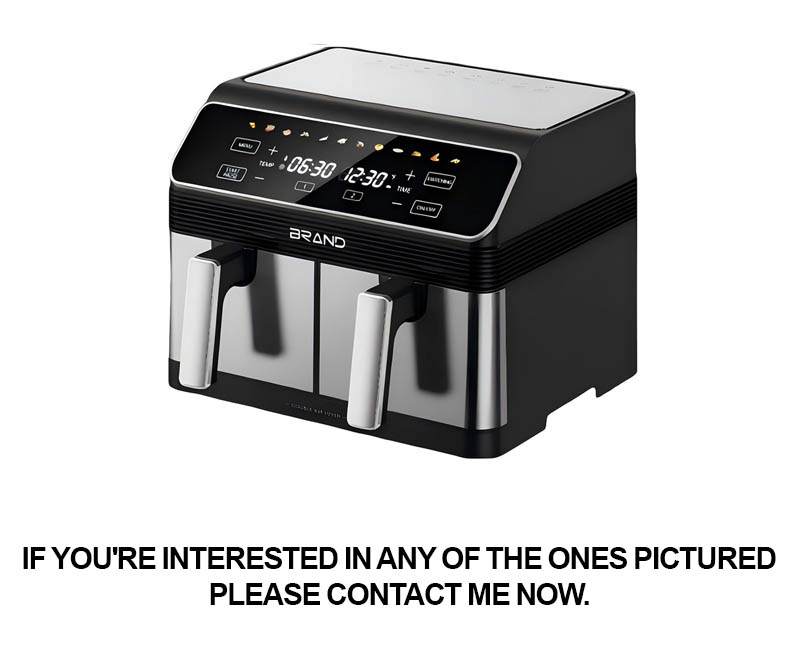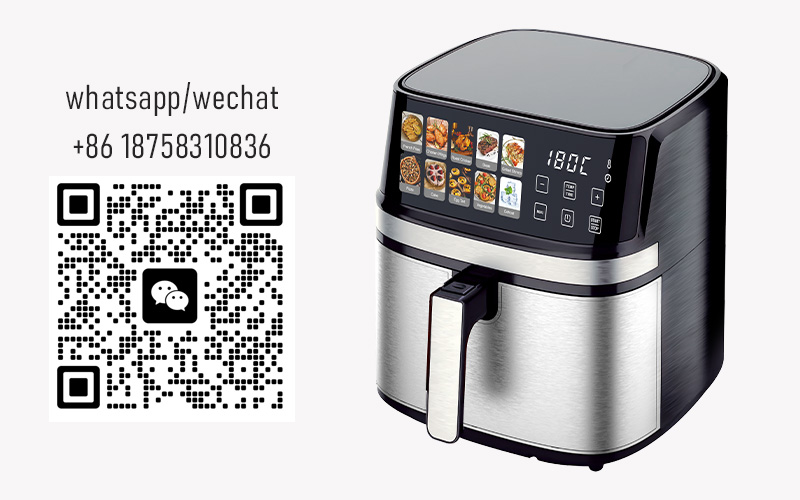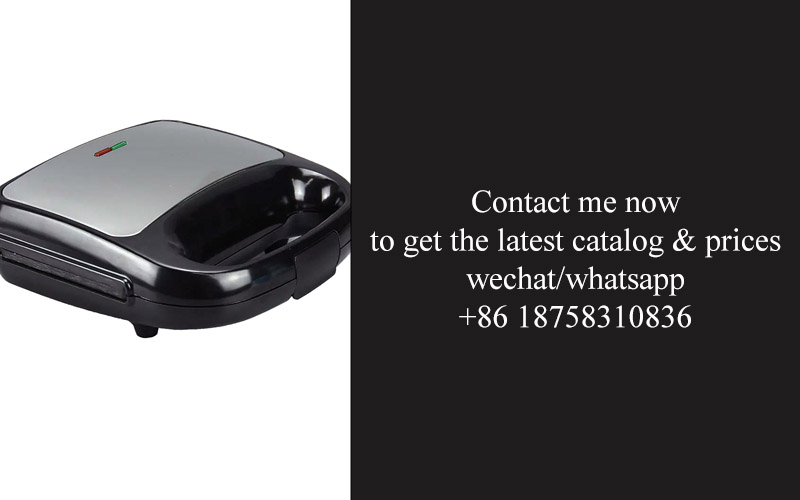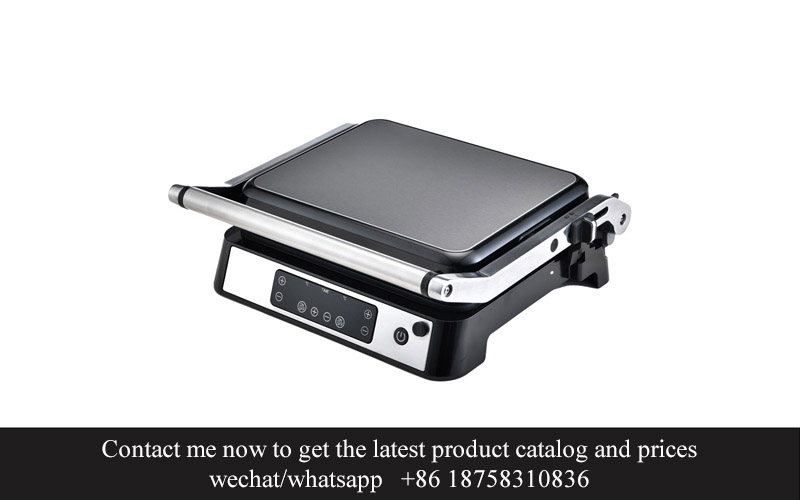Address
304 North Cardinal
St. Dorchester Center, MA 02124
Work Hours
Monday to Friday: 7AM - 7PM
Weekend: 10AM - 5PM
Address
304 North Cardinal
St. Dorchester Center, MA 02124
Work Hours
Monday to Friday: 7AM - 7PM
Weekend: 10AM - 5PM

In a world where technology and convenience intersect, the kitchen has become a hub of innovation. As we delve into the realm of kitchen appliances, it’s fascinating to explore the evolution of these tools that not only enhance our daily lives but also reflect our changing needs and values. From the early days of clunky toasters to the sleek, smart ovens of today, the journey has been marked by relentless innovation. Let’s take a moment to appreciate the strides made in this field and what the future might hold for the kitchen appliances that grace our countertops.
In the ever-evolving landscape of the kitchen, the heart of the home, appliances have become more than just tools for daily tasks; they are now integral to the overall aesthetic and functionality of the space. Innovating for the modern kitchen means embracing the latest advancements while staying attuned to the changing needs and preferences of consumers. From sleek, minimalist designs to smart, interconnected devices, the landscape of kitchen appliances is undergoing a transformative shift.
The kitchen, once a realm of warmth and comfort, is now a hub of technological innovation. Modern homeowners are seeking appliances that not only streamline cooking and cleaning but also offer a seamless integration with their lifestyles. This shift is driven by several key factors:
Customization and PersonalizationModern consumers want appliances that cater to their unique needs. Whether it’s a family-sized refrigerator or a compact microwave designed for a single individual, the emphasis is on customization. Suppliers are responding by offering a range of options that can be tailored to the size of the household, dietary preferences, and even individual cooking styles.
Sustainability and Energy EfficiencyEnvironmental consciousness is on the rise, and so is the demand for appliances that are eco-friendly. The modern kitchen appliance must balance efficiency with performance. From energy-saving modes to appliances made from recycled materials, sustainability is no longer a niche feature but a standard expectation.
Smart Technology IntegrationSmart kitchen appliances are no longer a futuristic concept; they are a present-day reality. From ovens that can be controlled remotely via smartphone apps to refrigerators that track food inventory and order supplies automatically, the integration of smart technology is transforming how we interact with our kitchen tools. This not only adds convenience but also provides valuable data that can help families make healthier choices and save money.
Design and AestheticsThe kitchen has become a space for self-expression, and appliances are no longer just utilitarian. Modern kitchens are designed to be aesthetically pleasing, with sleek lines, concealed controls, and materials that complement the overall design theme. Appliances that blend into the kitchen’s decor or serve as statement pieces are becoming increasingly popular.
Cooking Functionality and FlexibilityToday’s appliances are not just about convenience; they are also about delivering a superior cooking experience. Multifunctional appliances, such as induction cooktops that can switch from simmer to sear with a simple adjustment, and slow cookers that can be programmed for up to 24 hours, offer users unprecedented control over their culinary creations. The modern kitchen is no longer limited by traditional cooking methods.
Safety and HealthSafety is paramount, especially with appliances that are used on a daily basis. Innovations in safety features, such as automatic shut-offs, child locks, and smart sensors that monitor cooking temperatures, are becoming standard. Additionally, health-conscious consumers are seeking appliances that can assist in preparing meals with minimal added fat and sodium, or even offer steam cooking options to retain more nutrients.
Accessibility and InclusivityInnovation in kitchen appliances also extends to inclusivity. The need for accessible designs that cater to individuals with disabilities or those with varying mobility levels is increasingly being addressed. From easy-to-use controls to appliances that can be operated with voice commands or even a simple touch, the modern kitchen is becoming more accessible to all.
In sum, the modern kitchen is a testament to human ingenuity and the ever-growing list of possibilities in the realm of technology and design. The appliances within it are not just tools; they are extensions of the user’s lifestyle, reflecting a blend of efficiency, functionality, and style. As the kitchen continues to evolve, so too will the appliances that make it the heart of the home.

In the bustling world of kitchen appliances, the approval from a retail giant like Walmart holds a position of prestige and power that cannot be overstated. This nod of approval from Walmart, one of the most recognized and respected retailers globally, is not just a stamp of quality—it’s a gateway to a vast consumer base and a testament to a brand’s ability to compete in a crowded market.
Walmart’s brand is synonymous with affordability and reliability, and for a small appliance supplier to earn this approval, it means their products have undergone rigorous testing and evaluation. This process ensures that the appliances meet or exceed the high standards that Walmart demands, from safety and performance to durability and energy efficiency.
The sheer scale of Walmart’s global presence means that once a product is approved, it gains instant visibility. The retailer’s massive distribution network ensures that these appliances reach customers in a vast array of locations, from urban centers to rural areas. This expansive reach is invaluable for suppliers looking to expand their market share and gain brand recognition on a global scale.
Moreover, Walmart’s approval is not just about sales; it’s about trust. Consumers often associate Walmart with quality, and having the retailer’s seal of approval can significantly boost a brand’s credibility. When customers see a Walmart logo on a product, they’re more likely to trust its reliability and performance, which can be a deciding factor in a market where competition is fierce.
For small appliance suppliers, the Walmart partnership also offers a unique opportunity to tap into the retailer’s marketing muscle. Walmart invests heavily in promoting its products, and being part of this promotional machine can skyrocket a brand’s visibility. The co-branded marketing campaigns, exclusive deals, and promotional events that Walmart hosts can elevate a supplier’s brand from a niche player to a household name.
Furthermore, Walmart’s commitment to sustainability and social responsibility is a key factor in the approval process. Suppliers that align with Walmart’s values and demonstrate a commitment to sustainable practices and ethical sourcing are more likely to be granted approval. This not only benefits the environment but also appeals to the growing number of consumers who are conscious of these issues and prefer to support brands that share their values.
The economic impact of Walmart’s approval is significant. The financial backing and purchasing power that come with being a Walmart supplier can provide a substantial boost to a small appliance manufacturer’s growth and development. This can lead to the scaling up of operations, investment in new technologies, and the ability to innovate further, creating a virtuous cycle of improvement and expansion.
Additionally, the collaborative nature of Walmart’s relationships with suppliers fosters a culture of continuous improvement. Walmart often seeks feedback and works closely with suppliers to enhance product features, streamline supply chains, and ensure that products are meeting customer needs. This symbiotic relationship can lead to the development of products that are not just innovative but also aligned with the evolving landscape of consumer expectations.
In conclusion, Walmart’s approval is a significant milestone for a small appliance supplier. It’s a recognition of quality, a launchpad for global reach, a boost to brand trust, an opportunity for robust marketing, a commitment to sustainability, and a financial windfall. For many suppliers, this approval is the linchpin that allows them to transition from a small player to a major player in the kitchen appliance industry. It’s not just about selling products; it’s about becoming a part of a larger narrative that includes innovation, reliability, and customer satisfaction.

In the ever-evolving world of kitchen appliances, standing out in a crowded market is no small feat. That’s why our team at [Company Name] has dedicated itself to crafting unique product ideas that not only resonate with modern consumers but also redefine what’s possible in the kitchen. Here are some of the standout concepts we’ve developed:
Smart Cooking Assistant: Imagine a kitchen appliance that doesn’t just cook; it learns. Our Smart Cooking Assistant is a countertop unit that uses AI to analyze your dietary preferences, cooking habits, and even the contents of your pantry. It then suggests recipes and adjusts its cooking settings to ensure your meals are both nutritious and delicious.
Multi-Functional Blender: Who said a blender could only make smoothies? Our multi-functional blender can crush ice, chop herbs, and even knead dough. It features a unique, modular design that allows users to swap out attachments for different cooking tasks, making it a versatile tool for every chef at home.
Intelligent Oven with Preset Cooking Styles: Not everyone has the time or inclination to learn the nuances of different cooking techniques. Our intelligent oven takes the guesswork out of cooking with preset styles like “Prosciutto” for delicate roasts or “Stir Fry” for quick and vibrant dishes. It even adjusts the temperature and cooking time to ensure the perfect outcome every time.
Voice-Controlled Fridge with Smart Storage Solutions: The kitchen fridge is a hub for food storage, but it can often be disorganized and inefficient. Our voice-controlled fridge not only listens to your commands for opening and closing but also uses smart sensors to track food expiration dates and suggest recipes based on what you have on hand. It’s like having a personal chef in your fridge.
Eco-Friendly and Energy-Efficient Range Hoods: Kitchen ventilation is often overlooked, but it’s crucial for both air quality and the health of your appliances. Our range hoods are designed with eco-friendly materials and energy-efficient fans that quietly whisk away smoke and odors without consuming a lot of power.
Cooking Appliance with Haptic Feedback: Ever wondered how to know when your food is perfectly cooked? Our innovative cooking appliance incorporates haptic feedback. When the food is ready, the handle vibrates, alerting you to take it off the heat. It’s a subtle yet effective way to ensure precision cooking.
Customizable Kitchen Appliance with Modular Components: We believe in personalization, so we’ve created a kitchen appliance that can be customized to fit your specific needs. With modular components, you can choose the features that matter most to you, whether it’s a powerful blender, a built-in coffee maker, or a compact steamer.
Interactive Cooking Platform: Our unique product isn’t just a single appliance; it’s part of an interactive cooking platform. Users can connect to our app to access recipes, cooking tips, and even share their culinary creations with the community. It’s a hub for kitchen enthusiasts to learn and grow together.
Adaptive Cooking Technology: Our appliances are designed to adapt to the way you cook. With adaptive technology, the appliance can sense when you’re cooking at a higher or lower temperature and adjust accordingly. It’s like having a chef who’s always in the kitchen with you.
Sustainable and Recyclable Appliance Design: Finally, we’ve made a commitment to sustainability. Our appliances are designed with recyclable materials and are built to last, reducing the environmental impact over their lifetime.
These unique product ideas are just the beginning of our journey to transform the kitchen experience. At [Company Name], we’re not just creating appliances; we’re crafting tools that inspire, simplify, and enhance the way people interact with their food and cooking.

In the ever-evolving landscape of kitchen appliances, staying ahead of the curve is paramount. Data-driven insights have become the cornerstone for companies looking to innovate and meet consumer demands. Here’s a glimpse into the latest market trends and the insights that are shaping the future of the industry.
Smart Integration and ConnectivityThe integration of smart technology into kitchen appliances is not just a trend; it’s a necessity. Consumers are increasingly seeking appliances that can connect to their smartphones or home automation systems. From refrigerators that can sync with grocery delivery services to ovens that can be controlled remotely, the ability to connect and interact with kitchen gadgets is becoming a standard feature.
Energy Efficiency and SustainabilityEnergy efficiency is no longer just an environmental concern; it’s a financial one for consumers. As the cost of energy continues to rise, appliances that consume less power are not only better for the planet but also for the pocketbook. Data indicates a growing preference for appliances with Energy Star ratings, showcasing a clear market shift towards sustainability.
Health and Wellness FeaturesThe kitchen is becoming a hub for health and wellness, with appliances that cater to these trends. We’re seeing a surge in demand for appliances that offer features like air-frying, which provides a healthier alternative to deep-frying. Additionally, there’s a rise in smart kitchen devices that can provide nutritional information and cooking instructions based on dietary preferences and restrictions.
Personalization and CustomizationToday’s consumers are looking for more than just a product; they’re seeking a solution that fits their lifestyle. Data from market research shows a trend towards personalized and customizable kitchen appliances. From adjustable oven temperatures to refrigerator interiors that can be reconfigured to store larger containers, the ability to tailor appliances to individual needs is becoming increasingly important.
Artificial Intelligence and Machine LearningThe rise of AI and machine learning is beginning to transform the kitchen appliance industry. From appliances that learn your cooking habits and adjust settings accordingly to those that can predict maintenance needs, the potential for these technologies is vast. Data indicates that as these technologies become more sophisticated, they’ll become more prevalent in kitchen appliances.
Design and AestheticsWhile functionality is key, design and aesthetics are also playing a significant role in the appliance market. Data shows that consumers are willing to pay more for appliances that look good and fit into their kitchen decor. We’re seeing a move towards sleeker, more modern designs, with a focus on materials that are durable and easy to clean.
Innovative Cooking TechniquesAppliances that can replicate the flavors and textures of traditional cooking methods, such as wood-fired grilling or sous-vide cooking, are becoming popular. Data suggests that these appliances not only cater to culinary enthusiasts but also to those looking to add a touch of gourmet cooking to their homes without the need for professional-grade equipment.
E-Commerce and Direct-to-Consumer SalesThe growth of e-commerce has had a significant impact on the appliance market. Consumers are increasingly turning to online platforms for their appliance purchases, leading to a rise in direct-to-consumer sales. Data indicates that this trend will continue to grow, with more suppliers looking to establish a strong online presence.
Safety and SecurityWith the rise of smart home technology, safety and security are at the forefront of consumer concerns. Appliances that offer advanced safety features, such as child locks and secure Wi-Fi connections, are becoming more sought after. Data reveals that appliances that prioritize user safety will have a competitive edge in the market.
The market trends and data-driven insights in the kitchen appliance industry are a testament to the industry’s adaptability and responsiveness to consumer needs. By staying informed and leveraging data, appliance manufacturers can continue to innovate and provide solutions that not only enhance the cooking experience but also improve daily life for consumers around the world.

In the realm of kitchen appliances, the focus has shifted from mere functionality to an experience that enhances the daily lives of consumers. Customer-centric design has become the cornerstone of innovation, ensuring that the appliances not only perform their tasks efficiently but also integrate seamlessly into the user’s lifestyle. Here’s a closer look at how this philosophy shapes the modern kitchen appliance market.
Appliances that blend aesthetics with utility are gaining traction. Modern consumers are not just looking for a sleek design; they want appliances that complement their kitchen decor. Smart appliances, for instance, are not just about the technology inside but also about the sleek lines and minimalistic designs that make them a visual appeal. Companies are investing in research and development to create appliances that are not only practical but also serve as a statement piece in the kitchen.
Ease of use is another critical aspect of customer-centric design. The days of complicated interfaces and numerous buttons are fading away. Today’s appliances are designed with intuitive controls, often featuring touchscreens or voice-activated commands. This not only simplifies the operation but also makes the appliances accessible to a broader range of users, including those who may not be as tech-savvy.
Energy efficiency and sustainability have become key considerations in the design process. Consumers are increasingly aware of their carbon footprint and are looking for appliances that help reduce energy consumption. This shift has led to the development of appliances that not only save money on utility bills but also contribute to a greener planet. Features like programmable settings, energy-saving modes, and eco-friendly materials are becoming standard in the latest appliance designs.
Customization is also a growing trend in kitchen appliance design. Users today want to feel that their appliances are tailored to their needs. This could mean adjustable settings on cooktops and ovens, or a range of colors and finishes to match personal preferences. Some appliances even come with smart features that can learn from the user’s habits and adjust settings accordingly, creating a truly personalized experience.
Safety is paramount in customer-centric design. Appliances are now equipped with features that prevent accidents and protect against potential hazards. This includes child locks on ovens and refrigerators, automatic shut-off mechanisms to prevent overheating, and smart sensors that detect leaks and alert homeowners. These safety features not only provide peace of mind but also ensure that the appliances are suitable for households with children or the elderly.
The integration of smart technology into kitchen appliances has been a game-changer. Today’s consumers expect their appliances to be connected, allowing them to control and monitor them remotely via smartphones or smart home systems. This connectivity not only adds convenience but also allows for better energy management and predictive maintenance. Appliances that can be updated with software updates and can interface with other smart devices in the home are becoming more common.
Accessibility is another important aspect of customer-centric design. Appliances are being designed with features that cater to users with disabilities or limitations. This includes easy-to-open doors, adjustable heights, and controls that are accessible to those with mobility issues. By focusing on accessibility, manufacturers are not only broadening their market but also making their products more inclusive.
Lastly, the user experience is at the heart of customer-centric design. Companies are investing in user testing and feedback to ensure that their appliances are not only functional but also enjoyable to use. From the initial unboxing experience to the daily interaction with the appliance, every detail is scrutinized to ensure it meets the expectations of the consumer.
In conclusion, the shift towards customer-centric design in kitchen appliances is a testament to the evolving needs and expectations of consumers. By focusing on ease of use, sustainability, safety, customization, and connectivity, appliance manufacturers are creating products that not only perform their intended tasks but also enhance the overall quality of life in the modern kitchen.

In today’s conscious consumer landscape, sustainability and energy efficiency have become more than just buzzwords; they are core values shaping the future of the kitchen appliance industry. Here’s how these concepts are redefining the market:
The Shift Towards Eco-Friendly MaterialsManufacturers are increasingly focusing on the sourcing of materials. From biodegradable plastics to recycled metals, the choice of materials is a testament to a commitment to reducing environmental impact. Appliances made from these sustainable materials not only contribute to a cleaner planet but also appeal to consumers who are environmentally conscious.
Smart Energy Management SystemsModern kitchen appliances are equipped with smart technology that optimizes energy use. Features like programmable timers, power-saving modes, and smart connectivity allow users to control their appliances remotely, ensuring that energy is used efficiently. This shift towards smart energy management systems is not just about reducing utility bills; it’s about creating a more sustainable lifestyle.
Energy Star Ratings and CertificationsEnergy Star, a government-backed program, has become a trusted mark of energy efficiency. Appliances that carry this certification are known to meet strict energy consumption guidelines, providing consumers with a straightforward way to identify the most energy-efficient options on the market. As more consumers seek out Energy Star-rated products, the demand for sustainable appliances continues to grow.
Water Conservation InnovationsIn regions where water is a precious resource, appliances that conserve water have become a focal point. Dishwashers and washing machines with eco-friendly cycles that use less water and energy are becoming more popular. These innovations not only help households reduce their water footprint but also align with the broader trend of sustainable living.
Zero-Waste Cooking AppliancesThe concept of zero-waste cooking is gaining traction, and appliances that facilitate this approach are becoming more prevalent. For instance, multi-functional cookers that can sear, slow-cook, and pressure-cook are not only time-saving but also reduce food waste by allowing users to make the most out of every ingredient.
Smart Appliance EcosystemsSustainability extends beyond individual appliances; it’s about creating an interconnected ecosystem. Appliances that can communicate with each other and with the home’s smart systems can optimize energy use throughout the house. For example, a refrigerator that can adjust its cooling cycles based on the usage patterns of other kitchen appliances in the home.
Longevity and UpgradabilityDesigning appliances for longevity and upgradability is another key aspect of sustainability. Appliances that are built to last longer reduce the need for frequent replacements, thereby cutting down on waste. Additionally, modular designs that allow for easy upgrades and repairs ensure that the appliance remains efficient and functional for years to come.
Consumer Education and TransparencyTo foster a culture of sustainability, manufacturers are investing in consumer education. Clear labeling and information about the sustainability features of appliances help consumers make informed decisions. Transparency about the appliance’s lifecycle and the steps taken to ensure it is environmentally friendly is crucial in building trust with customers.
As the kitchen appliance industry continues to evolve, sustainability and energy efficiency are becoming more than just selling points; they are integral to the design and functionality of the products themselves. Consumers are not just buying appliances; they are investing in a lifestyle that is both efficient and responsible.

In the ever-evolving landscape of the kitchen appliance industry, forming a partnership with a retail giant like Walmart can be a game-changer for suppliers. This collaboration offers more than just a platform to sell products; it’s a strategic alliance that can enhance brand visibility, drive sales, and foster innovation. Here’s how this partnership can be a win-win for both the supplier and Walmart.
The Power of Brand AssociationWhen a small appliance supplier earns the Walmart approval, it’s akin to a stamp of approval from one of the most recognized names in retail. This association can significantly boost the supplier’s brand reputation. Consumers often equate Walmart with quality and reliability, so being part of the Walmart family can lend a sense of credibility to the supplier’s products.
Expanding Market ReachWalmart’s global presence and expansive customer base offer suppliers a unique opportunity to reach millions of potential buyers. The retailer’s vast distribution network ensures that the supplier’s products are not only visible on shelves but also accessible to customers across different regions. This expanded market reach can lead to increased sales and a more diverse customer demographic.
Enhanced Marketing and AdvertisingBeing a Walmart-approved supplier often comes with additional marketing benefits. Walmart may feature the supplier’s products in its advertising campaigns, highlighting the unique features and benefits. This kind of exposure can be invaluable for small businesses that may not have the budget for extensive marketing efforts. The synergy between the retailer’s marketing muscle and the supplier’s innovative products can create a powerful promotional engine.
Strategic Sourcing and Cost EfficiencyFor Walmart, partnering with small appliance suppliers means accessing a diverse range of products that can cater to various customer needs. This strategic sourcing allows Walmart to offer a wide selection of appliances at competitive prices. In turn, suppliers benefit from bulk orders and economies of scale, which can lead to cost savings in production and logistics.
Supply Chain CollaborationThe partnership fosters a collaborative environment where both parties can work together to optimize the supply chain. Walmart’s insights into inventory management, customer demand, and product lifecycle can help suppliers streamline their operations. This collaboration can lead to improved efficiency, reduced lead times, and a more responsive product development process.
Innovation and Product DevelopmentWalmart’s reputation for offering the latest trends and cutting-edge products incentivizes suppliers to innovate. Knowing that their products will be showcased alongside the latest consumer goods, suppliers are motivated to invest in research and development. This push for innovation can lead to the creation of unique and highly desirable kitchen appliances that appeal to Walmart’s discerning customer base.
Customer Feedback and Product ImprovementThe direct interaction with Walmart’s customers through the retail giant’s sales channels provides suppliers with invaluable feedback. This customer insight can be used to refine existing products and develop new ones that better meet market demands. The partnership becomes a cycle of continuous improvement, where customer satisfaction is at the heart of product development.
Long-Term Growth and StabilityFor suppliers, a successful partnership with Walmart can be a cornerstone for long-term growth and stability. As Walmart continues to expand its product offerings, the supplier can enjoy sustained business opportunities. This stability can be particularly reassuring for small businesses that may be more vulnerable to market fluctuations.
In conclusion, the Walmart partnership is a multifaceted relationship that benefits both the supplier and Walmart. It’s not just about selling products; it’s about fostering a collaborative environment that drives innovation, enhances brand reputation, and ensures a competitive edge in the kitchen appliance market. For suppliers, this alliance is a strategic move that can lead to significant growth and a more secure future in a highly competitive industry.

In the ever-evolving landscape of kitchen appliances, staying ahead of the curve is key. As we look to the future, a glimpse into what’s coming next reveals a blend of innovation, technology, and consumer needs. Here are some of the trends and upcoming releases that are poised to reshape the kitchen of tomorrow.
The integration of smart technology continues to be a driving force. Appliances that can connect to the internet and offer remote control, personalized settings, and even predictive maintenance are becoming more common. Imagine a fridge that not only keeps your food fresh but also suggests recipes based on what you have on hand, or an oven that can be preheated from your phone while you’re still at work.
Energy efficiency is not just a trend; it’s a necessity. As environmental concerns grow, appliances that consume less energy and are made with sustainable materials are gaining popularity. We’re seeing a rise in induction cooktops, which are more energy-efficient than traditional electric or gas burners, and appliances that use less water, such as dishwashers with eco-friendly cycles.
The kitchen is no longer just a place to cook; it’s a hub for entertainment and socializing. Appliances that cater to this shift are becoming more stylish and multifunctional. Think of a countertop oven with a built-in Bluetooth speaker, or a coffee machine that doubles as a mini-bar, offering a selection of single-serve cocktails alongside your morning brew.
Personalization is key. From adjustable temperature settings on ovens to programmable cooking modes in microwaves, consumers are looking for appliances that can adapt to their specific needs. Customizable interfaces and the ability to update software for new features are becoming standard, allowing appliances to evolve with the user.
Safety is a paramount concern, and new advancements are making kitchens safer than ever. Sensors that detect gas leaks or overheating, and appliances that automatically shut off to prevent fires, are becoming more prevalent. Additionally, child safety features, such as locking mechanisms on kitchen drawers and cabinets, are becoming more sophisticated.
Accessibility is another area of focus. Appliances with voice-activated controls, Braille-like buttons, and larger displays are becoming more common, ensuring that everyone, regardless of ability, can use them comfortably.
Design is also playing a larger role in kitchen appliance innovation. Sleek, minimalist designs are replacing the bulky, outdated models of the past. Integrated appliances that blend seamlessly into kitchen cabinetry are becoming the norm, offering a clean, cohesive look that complements any kitchen style.
In the realm of cleaning, we’re seeing a shift towards appliances that are self-cleaning and easy to maintain. Self-cleaning ovens, dishwashers with sanitizing cycles, and steam mops that eliminate the need for harsh chemicals are becoming more popular.
The rise of subscription-based services for appliance maintenance and updates is also a notable trend. Consumers are increasingly interested in a hassle-free experience, where everything from software updates to cleaning services are taken care of for them.
As we look to the future, it’s clear that the kitchen appliance industry is poised for exciting developments. The key will be in balancing innovation with practicality, ensuring that the appliances of tomorrow are not only smart and efficient but also user-friendly and sustainable. From smart kitchens that can be controlled from anywhere to appliances that learn and adapt to your habits, the future of kitchen appliances is bright and full of possibilities.

In the ever-evolving landscape of kitchen appliances, it’s clear that innovation and adaptability are key to staying ahead. The future of these devices is not just about sleek designs and advanced technology; it’s about addressing the needs and desires of the consumer in a way that is both sustainable and efficient. Let’s ponder on what lies ahead.
Appliances that seamlessly integrate into smart homes are becoming more prevalent. The ability to control kitchen gadgets through voice commands or a simple tap on a smartphone app is no longer a novelty—it’s an expectation. Imagine a scenario where your oven preheats just as you step into the kitchen, or your refrigerator suggests a recipe based on the ingredients you have on hand. This level of personalization and convenience is not just a trend; it’s a testament to how technology can enhance daily life.
The rise of eco-conscious consumers has also paved the way for a surge in sustainable appliances. Energy-efficient models that use less power and reduce carbon footprints are not only good for the environment but also for consumers’ wallets. We’re seeing a shift towards appliances that not only perform their functions effectively but also do so with a mindfulness of the planet. This includes materials that are recyclable, parts that are replaceable, and designs that minimize waste throughout the product’s lifecycle.
Health and wellness are increasingly influencing kitchen appliance design. As people become more health-conscious, appliances that help prepare nutritious meals and provide nutritional information are becoming more popular. Think of kitchen aids that can grind nuts for nut butter or chop vegetables into perfectly sized pieces for smoothies. These devices are not just kitchen tools; they’re part of a broader lifestyle change that emphasizes well-being.
In the realm of cooking, there’s a growing interest in versatility and speed. The days of single-purpose appliances are fading as multi-functional devices become the norm. For instance, a countertop unit that can serve as a blender, a juicer, and a food processor not only saves space but also streamlines meal preparation. This trend is driven by the busy lifestyles of today’s consumers who seek efficiency without sacrificing quality.
The rise of smart technology isn’t just about convenience; it’s also about safety. Kitchen appliances that can detect fires, leaks, or other hazards and alert homeowners are becoming more common. This kind of proactive protection is a game-changer, especially in homes with children or elderly residents. As technology advances, we can expect even more sophisticated safety features that make cooking safer for everyone.
Customization is another area that’s poised for growth. Consumers are looking for appliances that can be tailored to their specific needs and preferences. This could mean programmable settings, customizable interfaces, or even appliances that learn from usage patterns and adjust accordingly. The future kitchen appliance will be as unique as the individual using it.
The integration of kitchen appliances with other home systems is also a trend to watch. We’re moving towards a world where kitchen appliances can communicate with your home security system, energy management system, and even your fitness tracker. This interconnectedness will not only make your kitchen a more efficient space but also a hub of personalized data and services.
In the world of kitchen appliances, the future is about seamless integration, sustainability, personalization, and safety. As we continue to innovate, we must also consider the broader implications of our products on the environment and society. The kitchen appliance of the future will be a reflection of the values and aspirations of the consumer, a true partner in the daily act of feeding our families and ourselves. It’s an exciting time to be part of this industry, as we craft the tools that will shape the kitchens of tomorrow.